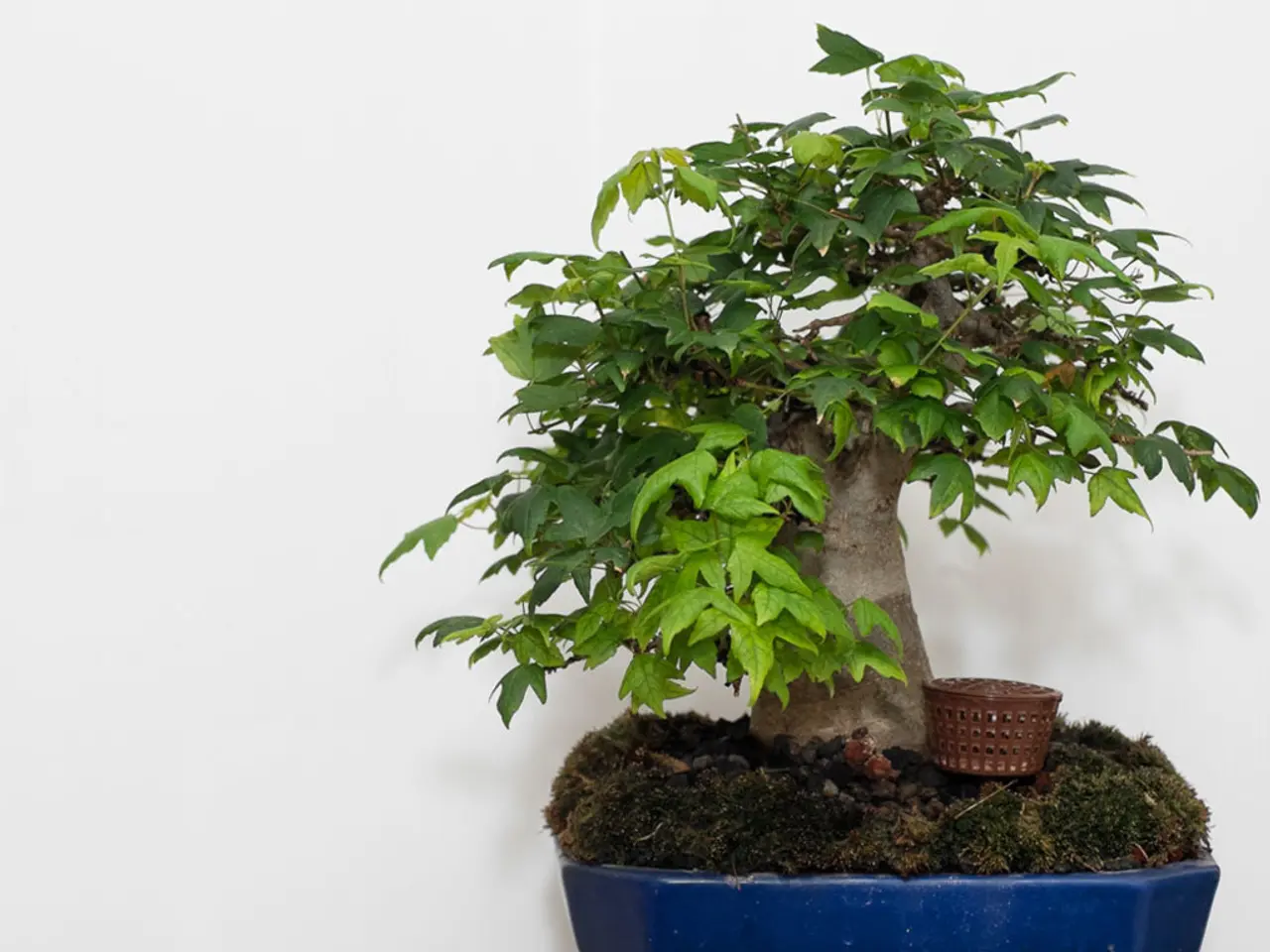Cultivation Instructions: Crafting a Miniature Tree - Bonsai Tree Creation Guide
In the world of horticulture, bonsai trees have captured the hearts and minds of many, offering a unique and captivating way to cultivate plants. By intentionally stunting the growth of a normal-sized tree and shaping it, bonsai becomes an art form that allows individuals to express their creativity while nurturing a living piece of nature.
One of the key aspects of bonsai care is pruning, a technique that not only limits upward growth but also encourages your tree to grow shorter and fuller. Maintenance pruning can shape the canopy of your bonsai tree throughout the growing season, allowing you to define the shape of your tree by removing haphazard and unwanted growth.
When it comes to selecting the right species for your bonsai, several types are well-suited for growing in bonsai form. For beginners, the Green Island Ficus, Fukien Tea, Juniper, Privet, Chinese Elm, and Sweet Plum are excellent choices. Each of these varieties boasts unique characteristics and requirements, ensuring that there is a bonsai to suit every environment and taste.
Green Island Ficus, for example, is a good choice for beginners with shiny, round leaves and aerial roots when humidity is adequate. It thrives in medium to bright light but tolerates low light, with weekly watering recommended.
For those seeking a classic bonsai look, Juniper with its blue-green needles and flexible stems is an excellent option, capable of forming natural, windswept shapes. It prefers bright light and cooler winter temperatures, watered about once a week.
In terms of care, bonsai trees require consistent routines involving light, watering, and pruning. Most bonsai need medium to bright indirect light, with weekly watering being common for many types. However, it's essential to note that the specific watering needs can vary depending on the species, pot size, and environmental conditions.
Certain species, such as Green Island Ficus, benefit from higher humidity to encourage aerial roots. Some bonsai, like junipers and privets, appreciate cooler temperatures during winter to thrive properly.
Regular pruning is essential to maintain the miniature form and shape of your bonsai tree. Fruiting and flowering bonsai like Chinese sweet plum benefit from more frequent pruning to encourage healthy growth and aesthetic appeal.
When it comes to repotting, the soil should be refreshed each time, and trimming roots should be done in a radial shape, with any diseased or damaged sections removed. It's recommended to repot your bonsai tree roughly every two years for younger trees.
For beginners, purchasing an established tree from a nursery or garden center is recommended. A moisture meter can help ensure proper watering for your specific tree, while wiring is an essential part of training a young, healthy tree to grow in the desired direction. Leaf-trimming techniques can achieve a balanced, full canopy or asymmetrical leaf growth.
Patience is key in the art of bonsai, as it can take a lifetime to care for a single tree. By following these guidelines and selecting the appropriate species according to your environment, you can successfully grow and maintain beautiful bonsai plants. With its endless possibilities for creativity and the calming, mindful process of care, bonsai offers a rewarding and enriching hobby for both beginners and experienced gardeners alike.
Care resources such as guides, books, and online forums can provide valuable insights to help maintain your bonsai tree's health and aesthetic appeal. Home-and-garden stores often carry a variety of equipment like moisture meters, pruning shears, and wiring tools essential for bonsai care. Additionally, gardening techniques like leaf-trimming and root trimming during repotting contribute to shaping your bonsai lifestyle, making it a rewarding part of your home-and-garden pursuits.




